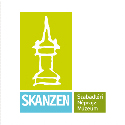Székesfehérvár Diocesan Museum
Székesfehérvár Diocesan Museum: AT HOME IN PRAYER
The pilot project focused on the presentation and spiritual power of Ukrainian religious traditions, holidays and prayers, promoting community building and intercultural dialogue. The project involved four events, which were attended by the same six Ukrainian displaced families. The events were realised with the cooperation of the Catholic Caritas, the official aid organization of the Hungarian Catholic Church. The families included schoolchildren, parents and grandparents, who attended the sessions at the four following locations: the permanent exhibition of the Székesfehérvár Diocesan Museum, the museum’s visitor centre, the Serbian Orthodox Church and the Church of St. Imre.
Target groups: Ukrainian displaced families.
The project explored Ukrainian and Hungarian traditions related to the Easter holiday with the active and creative involvement of the participants. An important element of the project was the opening of a final exhibition, presenting photos of the family members’ personal belongings and the stories related to them. The opening was followed by an ecumenical prayer and an agape, as a worthy conclusion of the joint creative and spiritual work. Active religious practice was not a precondition for project participation, but the power of faith gave the project an additional dimension, helping to strengthen the identity of the participating families. On the occasions, the participants got to know the museum’s permanent exhibition titled Between Earth and Sky, Ukrainian and Hungarian Easter gastronomy and traditions, and were able to participate in individual and family creative activities.
The project introduced the Ukrainian pysanky egg-painting tradition, as well as the Hungarian traditional egg-decorating methods using the same beeswax application technique, and provided space for individual self expression. On one event the family members prepared their own traditional Ukrainian Easter dishes (meat dishes, horseradish and beetroot dressings, sweet pastries etc.), and they also discussed the customs typical of each family (e.g. exchanging the festive Easter pastry). The occasion of joint prayers also created an opportunity for deepening in faith.
Through the methods of storytelling, the participants shared their personal experiences with the objects chosen for the exhibition. Visual creation, as well as intergenerational dialogue and learning were also important methodological elements of the initiative. The uniqueness of the project is that it was implemented with the participation of the same six families and with no changing actors, which enabled the birth of a small and protective community. This environment also provided the participants with a sense of safety for sharing personal stories.
Adaptation:
The project can be easily adapted for ecclesiastical museums, but it can also be implemented in any community–oriented organisation, even in an institution with a local history or ethnographic collection, involving target groups who experience social exclusion and the possible loss of their cultural habits and roots. The exhibition based on personal objects and the stories associated with them, the shared meals, the creative work that also overcomes language difficulties, and the ecumenical and spiritual dimension all help to implement the program in other locations and with different target groups.
Feedback of the participants:
The project participants gave positive feedback to the satisfaction questionnaire regarding whether the project had increased their knowledge about Ukrainian intangible cultural heritage elements:
“I learned about the traditions of Easter celebration, the differences between Orthodox and Roman Catholic celebrations.”
“I learned how to paint eggs and make Easter decorations. I got to know the motifs.”
“I got to know the traditions of each family.”





